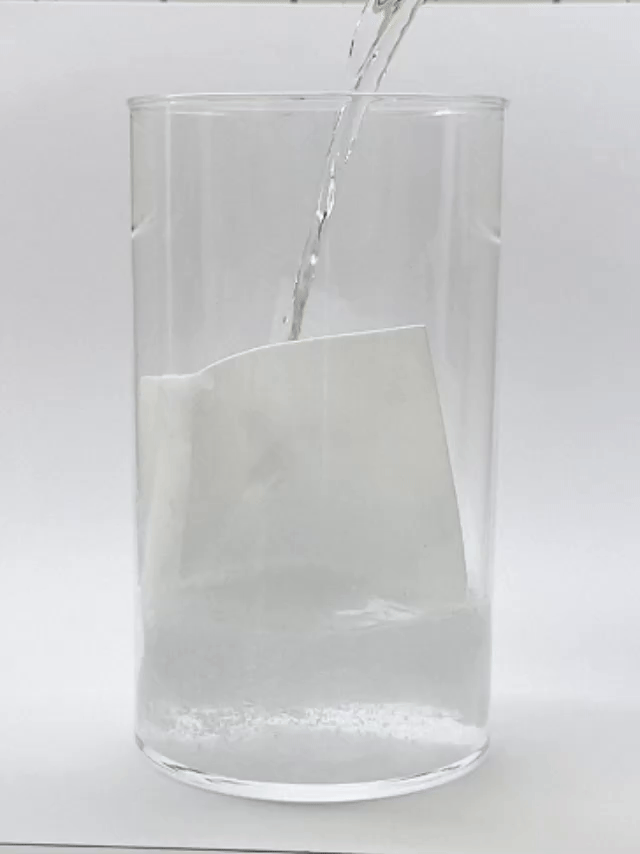

Are Laundry Sheets Plastic?
There’s been some buzz lately about whether laundry sheets are made of plastic and if they’re truly as "eco" as they claim. At MUSEWASH, we believe in transparency and real conversations about our ingredients.
Let’s break it down.
Are laundry sheets made of plastic?
Kind of. Our sheets contain PVA (Polyvinyl Alcohol)—a water-soluble polymer. While all plastics are polymers, not all polymers behave like traditional plastics. PVA is water-soluble and biodegradable, making it fundamentally different from conventional plastics, which persist in the environment.
Why do we use PVA in our sheets?
PVA holds the sheet together and ensures it dissolves properly in water. You’ll also find it in dishwasher tablets, supplement capsules, and even eye drops. It’s been around for decades and is extremely well-researched and thoroughly understood.
Bonus: PVA can actually improve laundry performance. It helps prevent dirt from redepositing onto clothes, working alongside our plant-based surfactants to deliver a better clean than detergent sheets or tablets without it.
Is PVA bad for the environment?
This is where the debate comes in. Based on extensive research, we say no.
PVA is considered safe for humans1 and the environment, and the structures of PVA used in detergents (including ours) are water-soluble, readily biodegradable and do not leak microplastics into the environment.2,3,4
So, what’s the debate about?
In 2021, Blueland, a company selling PVA-free detergent tablets, funded a study5 suggesting that PVA doesn’t fully break down in U.S. wastewater systems.
Sounds concerning, right? The problem? It contradicts decades of peer-reviewed research and has been rejected by experts, including the EPA6
We’re all for holding brands accountable—but this particular study has major flaws and has faced significant scientific pushback.
Is PVA actually biodegradable?
Yes. Research confirms that water-soluble PVA biodegrades completely and leaves no microplastics.
However, not all PVA is the same. Some versions (like those used in food packaging) don’t break down as easily. The PVA in laundry sheets is specifically designed to biodegrade.
Unlike silicones (look for Dimethicone on the ingredients list of so many beloved shampoos and personal care products), PVA breaks down completely in water treatment facilities and does not bioaccumulate in marine life. It’s scientifically distinct from traditional plastics because it dissolves in water and is consumed by microorganisms into carbon dioxide and water.
Want to dig deeper? The American Cleaning Institute put together a fact sheet explaining PVA’s biodegradability.
(Note: The American Cleaning Institute is partially funded by companies that use PVA, but we’ve reviewed their sources, and the science checks out.)
What about other common ingredients?
There’s been a lot of focus on PVA, but many ingredients found in traditional detergents and personal care products are far worse for our bodies and the environment.
Here’s how PVA stacks up:
| Ingredient/Material | What It Does | Environmental Impact |
|---|---|---|
| PVA (Polyvinyl Alcohol) | Helps laundry sheets dissolve completely in water | Biodegradable, leaves no microplastics, and breaks down in wastewater treatment plants |
| Silicones (Dimethicone, Cyclopentasiloxane) | Used in fabric softeners for smoothness. Also found in many shampoos, skincare, and cosmetics | Persistent in the environment, can bioaccumulate in aquatic life |
| Parabens | Preservatives in traditional laundry detergents. Also found in many shampoos, skincare, and cosmetics | Hormone disruptors, found in marine species |
| Optical Brighteners | Found in traditional laundry detergents | Toxic to aquatic life, slow to degrade |
| Liquid Detergent Bottles | Holds traditional detergent | Less than 5% of plastic detergent bottles are actually recycled, and a single full container can contribute up to 2.5 million microplastic particles into wastewater. |
That last one is huge. Even if a detergent itself is "clean," its plastic packaging isn’t. Most laundry detergent bottles aren’t recycled, and even when they are, plastic degrades with each cycle—meaning it still ends up in a landfill or the ocean.
By switching to laundry sheets, you eliminate plastic packaging altogether. That alone reduces waste far more effectively.
Why did the EPA reject Blueland’s petition?
Blueland’s study had some major gaps:
🚩 It examined PVA structures not actually used in laundry sheets. Some PVA types don’t break down in water, but the ones used in laundry products do.
🚩 It ignored decades of research proving that water-soluble PVA biodegrades properly.
🚩 It didn’t make a strong enough case for why additional testing is even needed.
Why does this matter?
There’s a lot of misleading info out there, and unfortunately, some of it comes from brands pushing their own agenda.
Headlines like “laundry sheets are plastic” or “laundry sheets cause microplastics” are designed to alarm people—but they don’t tell the full story.
We’ve done the research. And we believe in science.
At MUSEWASH, we use PVA because it works, dissolves completely, and aligns with our commitment to responsible ingredients.
We’ll keep following the science, but based on everything we know right now, we stand by it.
Citations:
1. DeMerlis CC, Schoneker DR. Review of the oral toxicity of polyvinyl alcohol (PVA). Food Chem Toxicol. 2003 Mar;41(3):319-26.
4. Emo Chiellini, Andrea Corti, Salvatore D'Antone, Roberto Solaro,
Biodegradation of poly (vinyl alcohol) based materials, Progress in Polymer Science, Volume 28, Issue 6, 2003, Pages 963-1014, ISSN 0079-6700, https://doi.org/10.1016/S0079-6700(02)00149-1.
5. Rolsky, C.; Kelkar, V. Degradation of Polyvinyl Alcohol in US Wastewater Treatment Plants and Subsequent Nationwide Emission Estimate. Int. J. Environ. Res. Public Health 2021, 18, 6027.
6. Freedhoff, M. Letter to Paiji Yoo, S., Cohen, D. April 21, 2023.